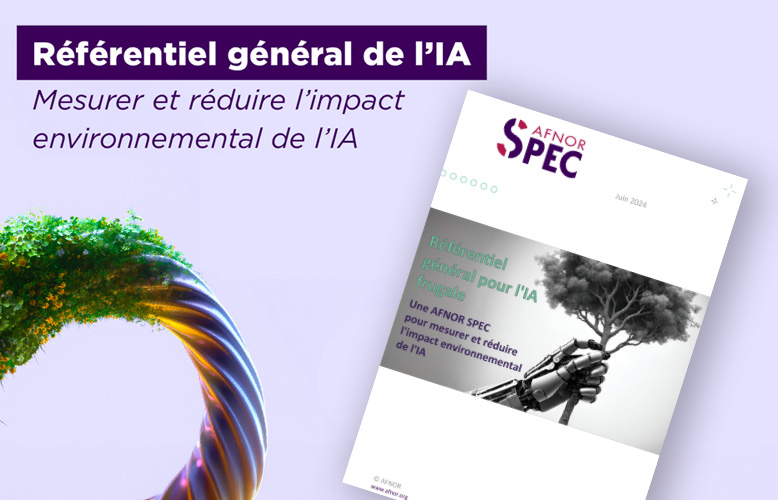A benchmark for measuring and reducing the environmental impact of AI

Artificial intelligence (AI) systems consume energy and resources to operate. But designing AIs that consume as little as possible means running the risk of suffering the rebound effect: when an AI’s efficiency makes it less costly and easier to put on board, its use can increase… and its environmental impact with it! AFNOR has published a document, AFNOR Spec 2314 , which takes stock of the subject and provides keys to avoiding the pitfalls and moving towards frugal artificial intelligence.
AI frugale: 31 best practice sheets
For the working group steered by AFNOR, made up of some forty players led by the Commissariat général au développement durable (La Poste, Hub France IA, Ademe, EcoInfo, etc.), the notion of frugality involves redefining needs (what is necessary?) and uses (how can we make better use of AI?). A frugal AI service is therefore one for which :
- the need to use an AI system rather than another less energy-intensive solution to meet the same objective has been demonstrated;
- good practices are adopted by the producer, supplier and customer to reduce the environmental impact of the service using an AI algorithm;
- uses and needs are intended to remain within planetary limits and have been questioned beforehand.
Frugal AI: communicating without greenwashing
The AFNOR Spec standard sets out a methodology for assessing environmental impacts, using a lifecycle approach, and includes 31 best practice sheets and recommendations for communicating the frugal nature of an AI service. It is aimed at all players using or developing an AI service and who need to be accountable as part of their CSR policy, or who need to integrate environmental criteria into their purchases of services including an AI system, particularly for public procurement.
In order to stand out from the crowd in a call for tenders or in the eyes of its customers, an AI supplier or AI producer may need to publish environmental information on its AI system or service, while clients will need benchmarks to assess the reliability of declarations. The standard therefore recommends that certain information be specified, for example to lend credibility to a quantitative assessment of environmental indicators over the life cycle. The supplier or producer will then specify the scope of the analysis.